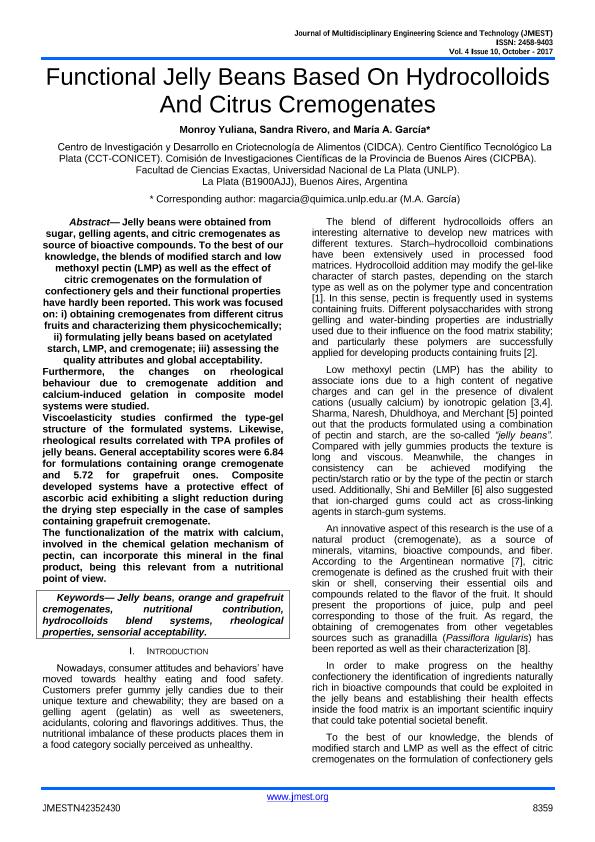Artículo
Functional Jelly Beans Based On Hydrocolloids And Citrus Cremogenates
Fecha de publicación:
10/2017
Editorial:
Journal of Multidisciplinary Engineering Science and Technology
Revista:
Journal of Multidisciplinary Engineering Science and Technology
ISSN:
2458-9403
Idioma:
Inglés
Tipo de recurso:
Artículo publicado
Clasificación temática:
Resumen
Jelly beans were obtained from sugar, gelling agents, and citric cremogenates as source of bioactive compounds. To the best of our knowledge, the blends of modified starch and low methoxyl pectin (LMP) as well as the effect of citric cremogenates on the formulation of confectionery gels and their functional properties have hardly been reported. This work was focused on: i) obtaining cremogenates from different citrus fruits and characterizing them physicochemically; ii) formulating jelly beans based on acetylated starch, LMP, and cremogenate; iii) assessing the quality attributes and global acceptability. Furthermore, the changes on rheological behaviour due to cremogenate addition and calcium-induced gelation in composite model systems were studied. Viscoelasticity studies confirmed the type-gel structure of the formulated systems. Likewise, rheological results correlated with TPA profiles of jelly beans. General acceptability scores were 6.84 for formulations containing orange cremogenate and 5.72 for grapefruit ones. Composite developed systems have a protective effect of ascorbic acid exhibiting a slight reduction during the drying step especially in the case of samples containing grapefruit cremogenate. The functionalization of the matrix with calcium, involved in the chemical gelation mechanism of pectin, can incorporate this mineral in the final product, being this relevant from a nutritional point of view
Archivos asociados
Licencia
Identificadores
Colecciones
Articulos(CIDCA)
Articulos de CENTRO DE INV EN CRIOTECNOLOGIA DE ALIMENTOS (I)
Articulos de CENTRO DE INV EN CRIOTECNOLOGIA DE ALIMENTOS (I)
Citación
Monroy, Yuliana; Rivero, Sandra G. M.; Garcia, Maria Alejandra; Functional Jelly Beans Based On Hydrocolloids And Citrus Cremogenates; Journal of Multidisciplinary Engineering Science and Technology; Journal of Multidisciplinary Engineering Science and Technology; 4; 10; 10-2017; 8359-8369
Compartir




